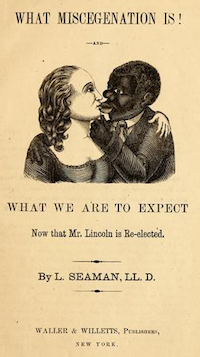Sesquicentennial Event Addresses Colorado InequalityPosted in Articles, Asian Diaspora, History, Law, Media Archive, Slavery, United States on 2014-11-18 22:21Z by Steven |
Sesquicentennial Event Addresses Colorado Inequality
Clarion: The University of Denver’s Newwspaper Since 1892
Denver, Colorado
2014-10-21
Carissa Cherpes
DU hosted a Sesquicentennial Conversation entitled Miscegenation Law, Marriage Equality, and the West 1864-2014 on Oct. 15 in the Sturm College of Law.
Over 50 students, faculty and others gathered to listen to three panelists lecture on how Miscegenation Laws and inequality affected our region throughout history. Miscegenation Laws banned marriages or relationships between mixed raced couples.
The three panelists were Rachel Moran, Ronald J. Stephens and Anna N. Martinez. The moderator was Bill Convery, who holds the position of Colorado State Historian…
…Next to present was Moran. She described how Miscegenation Laws originated in the South when concern over mixed race slave children became an issue. The popular opinion was that “mixed race children were black,” and therefore could not be considered free or have rights.
She then went on to talk about California’s Miscegenation Laws, which targeted Asian immigrants. In California, the laws were designed to force Chinese, Japanese and Filipino immigrants to return to their native country.
Moran then discussed how the Colorado territory had Miscegenation Laws as well, but only after additional land was acquired from Mexico. Because the people living in the territory had different customs and laws, there was an invisible boundary where mixed race couples were more accepted. She concluded by explaining how it was not until the 1960s that the Supreme Court decided Miscegenation Laws were unfair…
Read the entire article here.
